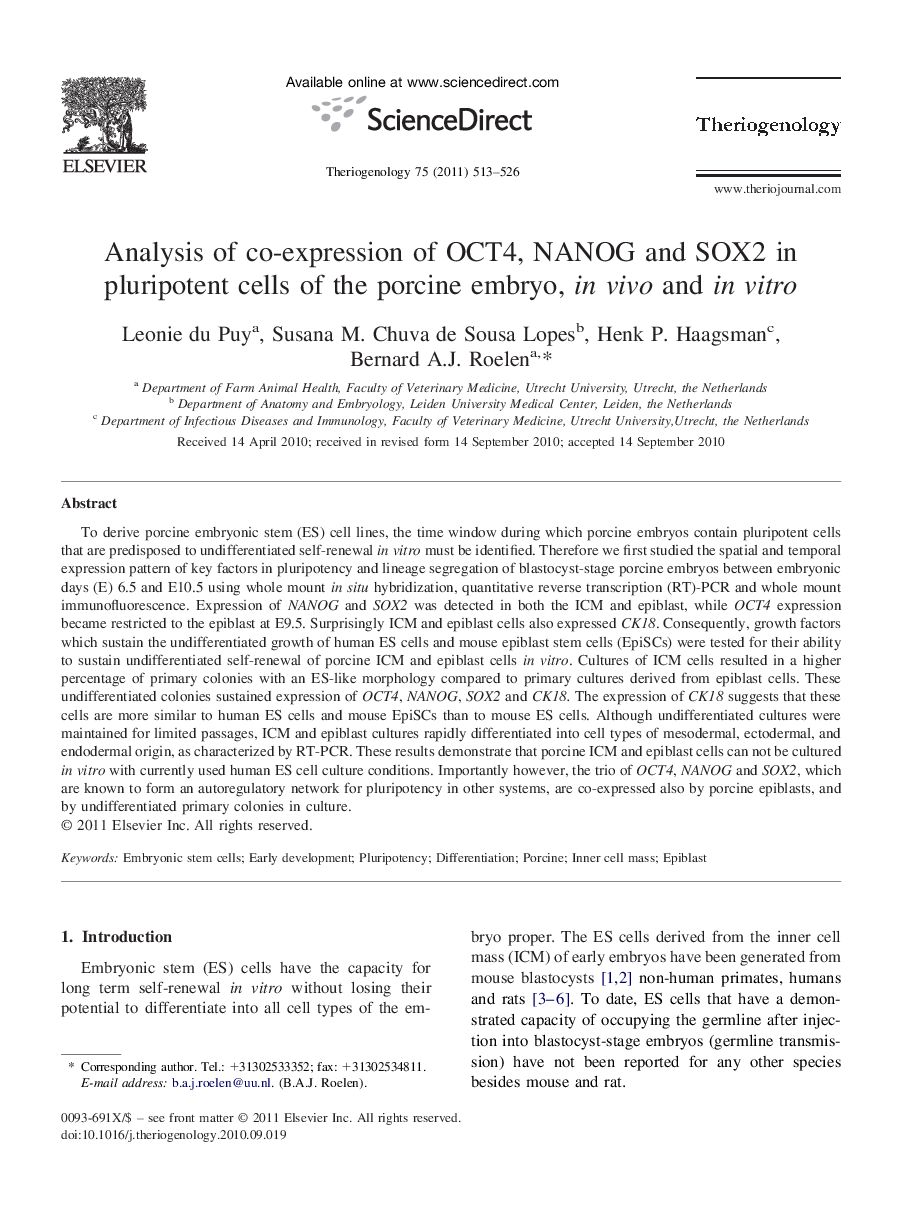| کد مقاله | کد نشریه | سال انتشار | مقاله انگلیسی | نسخه تمام متن |
|---|---|---|---|---|
| 2097791 | 1082550 | 2011 | 14 صفحه PDF | دانلود رایگان |

To derive porcine embryonic stem (ES) cell lines, the time window during which porcine embryos contain pluripotent cells that are predisposed to undifferentiated self-renewal in vitro must be identified. Therefore we first studied the spatial and temporal expression pattern of key factors in pluripotency and lineage segregation of blastocyst-stage porcine embryos between embryonic days (E) 6.5 and E10.5 using whole mount in situ hybridization, quantitative reverse transcription (RT)-PCR and whole mount immunofluorescence. Expression of NANOG and SOX2 was detected in both the ICM and epiblast, while OCT4 expression became restricted to the epiblast at E9.5. Surprisingly ICM and epiblast cells also expressed CK18. Consequently, growth factors which sustain the undifferentiated growth of human ES cells and mouse epiblast stem cells (EpiSCs) were tested for their ability to sustain undifferentiated self-renewal of porcine ICM and epiblast cells in vitro. Cultures of ICM cells resulted in a higher percentage of primary colonies with an ES-like morphology compared to primary cultures derived from epiblast cells. These undifferentiated colonies sustained expression of OCT4, NANOG, SOX2 and CK18. The expression of CK18 suggests that these cells are more similar to human ES cells and mouse EpiSCs than to mouse ES cells. Although undifferentiated cultures were maintained for limited passages, ICM and epiblast cultures rapidly differentiated into cell types of mesodermal, ectodermal, and endodermal origin, as characterized by RT-PCR. These results demonstrate that porcine ICM and epiblast cells can not be cultured in vitro with currently used human ES cell culture conditions. Importantly however, the trio of OCT4, NANOG and SOX2, which are known to form an autoregulatory network for pluripotency in other systems, are co-expressed also by porcine epiblasts, and by undifferentiated primary colonies in culture.
Journal: Theriogenology - Volume 75, Issue 3, February 2011, Pages 513–526